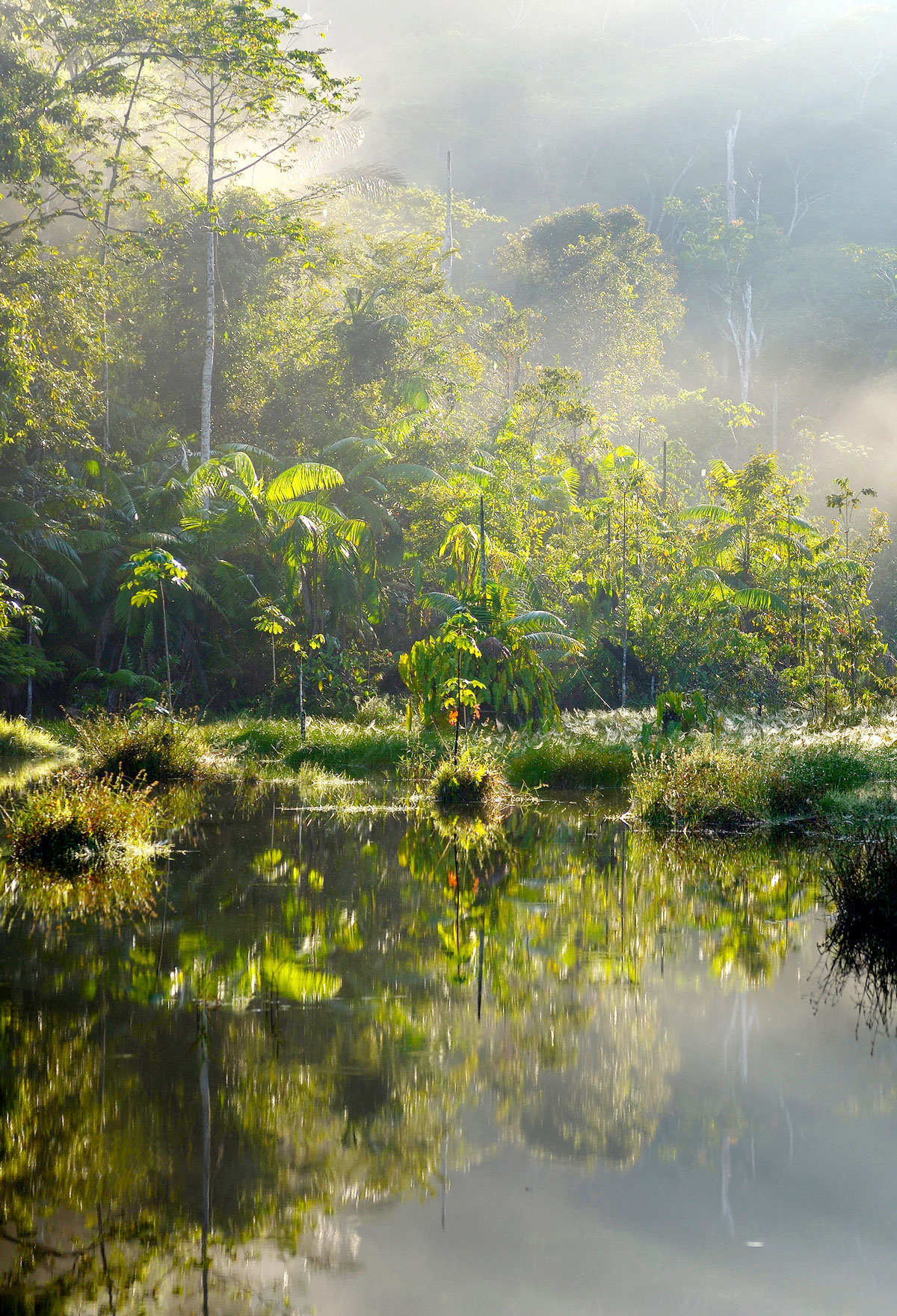Much like Earth’s mountain ranges and oceans, many of the planet’s forests date back millions of years. From the coasts of eastern Australia to the jungles of South America, these ancient and verdant woodlands offer a fascinating glimpse into Earth’s geological history. Forests are also known for their diverse ecosystems, containing some of the most unique and stunning animal and plant life found anywhere in the world. Whether you’re a nature lover looking to explore or simply curious about how the planet has evolved over time, here’s a look at six of the world’s oldest forests.
6. Réunion Island – France
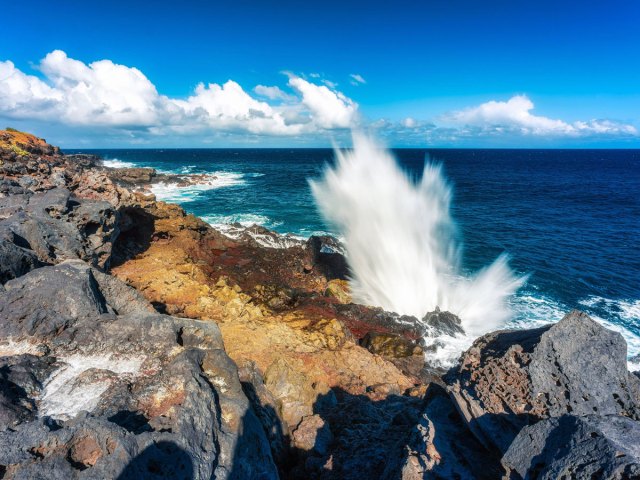
The forests of Réunion Island formed in the wake of volcanic activity that created this island, located about 585 miles east of Madagascar, around 3 million years ago. Réunion Island National Park is known for massive volcanic craters located throughout the park grounds, but the park’s forests are equally spectacular — with many endemic species of both flora and fauna that make these woodlands extremely unique.
Some of these species include 40 types of birds, five types of bats, several giant turtles, and around 380 types of vascular plants. Réunion Island contains both cloud forests and subtropical rainforests, where you’re bound to encounter a green bourbon gecko or even a bird of prey known as the Réunion harrier. The coloration of the forests include tints of red that are more rare elsewhere, reflecting the island’s history of volcanic activity.
5. Hyrcanian Forests – Azerbaijan and Iran

The Hyrcanian forests of western Asia extend for 528 miles along the southern border of the Caspian Sea. Located in parts of Iran and Azerbaijan, these broad-leaved woodlands date back between 25 and 50 million years, and, remarkably, they survived amid colder temperatures of the Quaternary glaciation that occurred 2.58 million years ago. Temperatures rose in the wake of that time period, allowing for the expansion of the Hyrcanian forests. Today, these forests contain 44% of Iran’s vascular plants (with over 3,200 documented), despite only covering 7% of the country as a whole.
The region is known for its biodiverse animal life — the forests contain some 180 species of birds and 58 types of mammals, such as the Persian leopard and Persian wild goat. There are also wolves roaming the Hyrcanian region, which is apt considering the name of this forest derives from a term for “wolf’s land.” While many other Asian and European forests perished during previous ice ages, the survival of the Hyrcanian forests is what makes these ancient woodlands truly special.
4. Amazon Rainforest – South America
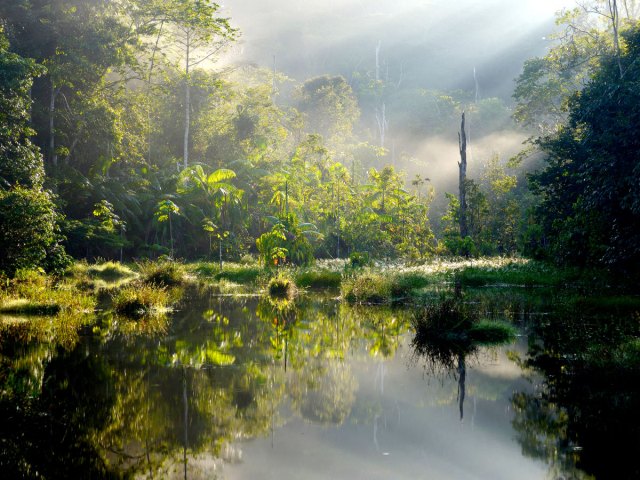
The Amazon Rainforest covers a whopping 2.72 million square miles of South American terrain. That not only makes it the world’s biggest rainforest, but it is also larger than the next two biggest rainforests combined. The Amazon’s vast size is matched by its incredible age, with plant life dating back 55 million years. More than 390 billion trees are located in the Amazon, including 16,000 distinct species — a number roughly equivalent to 10% of all known tree species on the planet. These trees and the other rich vegetation of the Amazon produce approximately 20% of the world’s total oxygen through photosynthetic processes.
Though the Amazon sits in parts of nine different countries, around two-thirds of the forest is located in Brazil. Here, you can find a wide variety of animal life, including 3,000 fish species, 1,300 birds, and over 2.5 million individual insect species. The Amazon is also home to an estimated 400 to 500 Indigenous tribes, many of which have never interacted with the outside world due to the forest’s breadth, inaccessibility, and density. Just how dense? In some parts of the Amazon, only 1% of sunlight permeates the canopies all the way down to the jungle floor.
3. Taman Negara – Malaysia
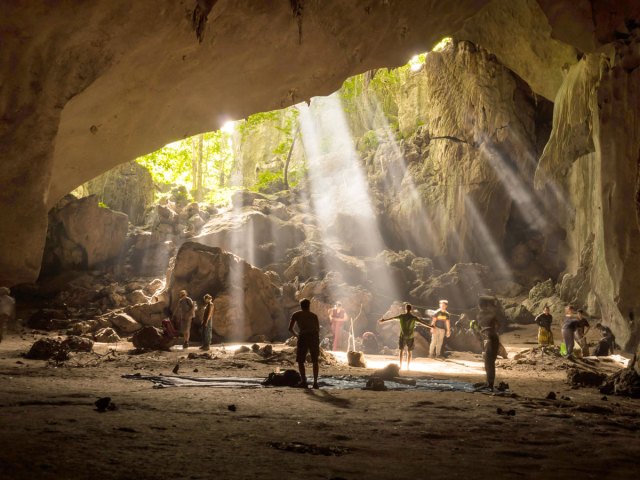
Taman Negara is a 130-million-year old tropical rainforest located in Peninsular Malaysia. Originally named after King George V, the rainforest was established as a national park in 1938, though its name was later changed to Taman Negara (the literal translation of “national park” in the Malay language). In addition to its ancient forests, the park also contains the highest mountain in Peninsular Malaysia — 7,175-foot-tall Mount Tahan — and serves as an important habitat for many animal species.
Within Taman Negara, you’re likely to find nearly 500 species of birds, 150,000 species of insects, and over 100 species of serpents crawling along the jungle floor. Rarer animals that roam these woodlands include elephants, tigers, and Sumatran rhinoceroses. The park is also home to at least 280 different types of trees, including the local Tualang tree, as well as other species known as Merbay, Meranti Tembaga, and Damar Hitam Siput. Visitors can take a stroll along the longest canopy walkway in the world, composed of 10 bridges spanning over 1,600 feet in length. The rainforest also contains a spectacular cave walk through Gua Telinga, providing a fascinating look at an underground river tunnel.
2. Borneo Lowland Rainforests – Indonesia, Malaysia, and Brunei
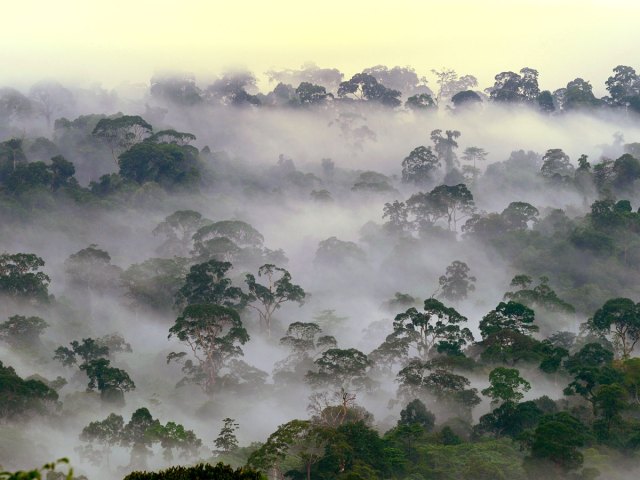
The Borneo Lowland Rainforests are located on their namesake Pacific island, which is shared between the nations of Indonesia, Malaysia, and Brunei. These forests formed as far back as 130 million years ago, and they contain a staggering 15,000 plant species and 3,000 individual tree types, not to mention 221 land mammal species and 420 types of birds. Pygmy elephants, clouded leopards, and orangutans are some of the many animals that roam these jungles. The forest also contains 155 endemic plant species, including an exceedingly rare flower known as Rafflesia arnoldii. This Indonesian national flower is ominously known as the corpse flower due to the pungent odor it emits. However, its size is what makes this flower truly special — it reaches average lengths of three feet across and weighs up to 15 pounds.
The forest — along with the island of Borneo as a whole — was once connected to the nearby islands of Java and Sumatra as one giant landmass. Borneo was later separated after sea levels rose in the wake of the Pleistocene glacial period around 12,000 years ago. This led to the development of Borneo’s unique ecology which is still present today. The rainforests experience over 150 inches of rainfall annually, adding to their incredible lushness.
1. Daintree Rainforest – Australia

Famed naturalist Sir David Attenborough once referred to the Daintree Rainforest as “the most extraordinary place on Earth.” Plants have been growing here for over 180 million years, making the Daintree the world’s oldest tropical rainforest. The expanse covers around 460 square miles along the Pacific coast of Queensland, Australia’s northeasternmost state, and contains 3,000 species of plants — 395 of which are listed as endangered or threatened. The Daintree is also home to over 12,000 types of insects, as well as 28% of the frogs, 34% of the mammals, and 40% of the birds that are native to Australia.
The forest was named after Richard Daintree, a geologist who conducted a photographic survey of Queensland in the late 1860s. Since these early studies, the Daintree has only grown in popularity, now welcoming around 400,000 annual visitors. One of the most popular sights is Cape Tribulation, where two UNESCO World Heritage Sites converge: the Wet Tropics Rainforest and the Great Barrier Reef. This spot, among many others, is popular for hiking, snorkeling, and other nature activities.
More from our network
Daily Passport is part of Inbox Studio, which publishes content that uplifts, informs, and inspires.






